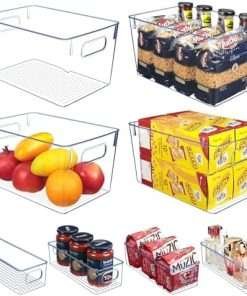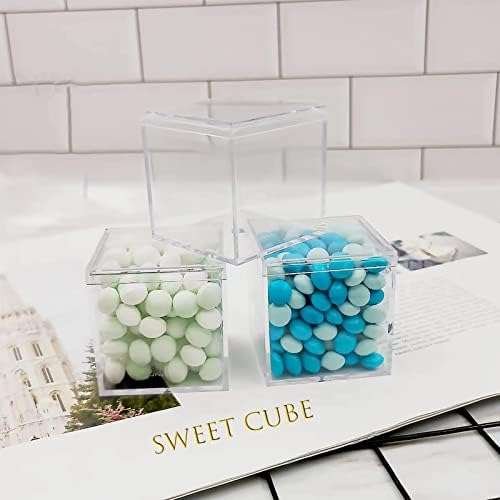Last Updated on July 7, 2024 by ALPPM
Plastic Covers for Shielding are protective covers made from plastic materials that are designed to shield and protect various objects or surfaces from damage, scratches, dust, or other contaminants.
Customers love Plastic Covers for Shielding because they offer a convenient and cost-effective solution for protecting their valuables or equipment. These covers are easy to use and can be quickly applied to a variety of objects, such as electronic devices, furniture, or machinery. They help to prolong the lifespan of items by keeping them safe from potential harm or wear and tear.
Additionally, Plastic Covers for Shielding are durable and resistant to tears, punctures, and moisture, making them suitable for long-term use. They are also available in a range of sizes, shapes, and thicknesses to accommodate different needs and preferences. Overall, customers appreciate the practicality and effectiveness of Plastic Covers for Shielding in safeguarding their belongings.
What are the materials of Plastic Covers for Shielding?
Plastic covers for shielding can be made from various materials, including:
1. Polycarbonate: Known for its high impact resistance and clarity, polycarbonate is a popular choice for plastic shielding covers.
2. Acrylic: Also known as plexiglass, acrylic is a durable material that offers good optical clarity and scratch resistance.
3. PETG (Polyethylene terephthalate glycol): PETG is a thermoplastic polymer that is commonly used for shielding covers due to its impact resistance and chemical resistance.
4. PVC (Polyvinyl chloride): PVC is a versatile material that can be used for shielding covers, offering good chemical resistance and durability.
5. Polystyrene: Polystyrene is a lightweight and inexpensive material that can be used for shielding covers in certain applications.
6. ABS (Acrylonitrile butadiene styrene): ABS is a strong and impact-resistant material that can be used for shielding covers in industrial applications.
Overall, the choice of material for plastic covers for shielding will depend on the specific requirements of the application, such as impact resistance, clarity, chemical resistance, and cost.
How to produce Plastic Covers for Shielding?
1. Design the plastic cover: Start by creating a design for the plastic cover that meets the specifications for shielding. Consider factors such as size, shape, thickness, and material composition.
2. Choose the right plastic material: Select a plastic material that is suitable for shielding, such as polycarbonate or acrylic. These materials are transparent, durable, and have good shielding properties.
3. Cut the plastic material: Use a cutting tool, such as a laser cutter or CNC machine, to cut the plastic material to the desired size and shape. Make sure to follow the design specifications accurately to ensure a precise fit.
4. Bend or mold the plastic material: If necessary, use a heat source to bend or mold the plastic material into the desired shape. This may require the use of specialized equipment, such as a heat gun or vacuum forming machine.
5. Add finishing touches: Once the plastic cover is shaped and cut to size, add any necessary finishing touches, such as smoothing out rough edges or adding mounting holes.
6. Test the plastic cover: Before using the plastic cover for shielding, test its effectiveness in blocking electromagnetic interference or other sources of radiation. Make any necessary adjustments to ensure optimal shielding performance.
7. Package and distribute the plastic covers: Once the plastic covers are produced and tested, package them securely and distribute them to customers or clients. Consider offering customization options, such as branding or additional features, to attract potential buyers.
How to make Plastic Covers for Shielding eco-friendly?
1. Use biodegradable or recyclable materials: Instead of using traditional plastic materials, opt for biodegradable plastics or other environmentally friendly materials such as bamboo or recycled paper.
2. Avoid harmful chemicals: Choose materials that are free from harmful chemicals such as BPA or phthalates, which can leach into the environment and harm wildlife.
3. Reduce packaging waste: Minimize the amount of packaging used for the plastic covers by using minimal and eco-friendly packaging materials.
4. Use renewable energy: Manufacture the plastic covers using renewable energy sources such as solar or wind power to reduce carbon emissions and environmental impact.
5. Encourage recycling: Include information on the packaging of the plastic covers about how to properly recycle them, and provide incentives for customers to return used covers for recycling.
6. Reduce transportation emissions: Source materials locally to reduce transportation emissions and support local businesses.
7. Support ethical manufacturing practices: Choose suppliers and manufacturers that adhere to ethical and sustainable practices in their production processes.
8. Create durable and long-lasting covers: Design plastic covers that are durable and long-lasting to reduce the need for frequent replacements and minimize waste.
How to design Plastic Covers for Shielding that can attract new customers?
1. Research and understand the needs and preferences of your target customers. This will help you design plastic covers that meet their specific requirements and desires.
2. Use high-quality materials and innovative design concepts to create visually appealing and functional plastic covers. Consider incorporating features such as unique shapes, patterns, colors, or textures that will catch the eye of potential customers.
3. Highlight the benefits of your plastic covers, such as durability, lightweight construction, ease of use, and effectiveness in protecting against various elements. Make sure to clearly communicate these advantages in your marketing materials and product descriptions.
4. Utilize social media and other digital marketing channels to showcase your plastic covers and engage with potential customers. Share photos, videos, and testimonials to demonstrate the quality and functionality of your products.
5. Offer promotions, discounts, or giveaways to incentivize new customers to try your plastic covers. Consider partnering with influencers or bloggers to help promote your products to a wider audience.
6. Provide excellent customer service and support to build trust and loyalty with your customers. Make it easy for them to contact you with any questions or concerns, and ensure a seamless shopping experience from start to finish.
7. Collect feedback from customers to continuously improve and refine your plastic covers based on their needs and preferences. This will help you stay competitive in the market and attract new customers in the long run.
How can custom Plastic Covers for Shielding help your brand?
Custom plastic covers for shielding can help your brand in several ways:
1. Brand visibility: Custom plastic covers can be tailored to showcase your brand logo, colors, and messaging, increasing brand visibility and recognition among customers and potential clients.
2. Professionalism: By using custom plastic covers for shielding, you can show attention to detail and a commitment to quality, which can enhance your brand’s reputation and credibility.
3. Brand differentiation: Custom plastic covers can help your products stand out from competitors, making them more memorable and appealing to customers.
4. Marketing opportunities: Custom plastic covers can serve as a cost-effective marketing tool, providing a platform to communicate key messages, promotions, or product information to customers.
5. Customer loyalty: Offering custom plastic covers as part of your product packaging can enhance the overall customer experience and create a sense of exclusivity, leading to increased customer loyalty and repeat business.
FAQ For Plastic Covers for Shielding
1. What are the benefits of using plastic covers for shielding?
– Plastic covers provide a protective barrier against dust, dirt, and moisture, helping to extend the lifespan of your equipment. They also help prevent scratches and damage during transportation or storage.
2. Are plastic covers reusable?
– Yes, many plastic covers for shielding are reusable. They can be easily cleaned and disinfected for multiple uses.
3. Do plastic covers come in different sizes?
– Yes, plastic covers for shielding come in a variety of sizes to accommodate different types of equipment and objects. They can also be custom-made to fit specific dimensions.
4. Are plastic covers durable enough to withstand rough handling?
– Plastic covers for shielding are typically made from heavy-duty materials that are designed to withstand rough handling and provide long-lasting protection.
5. Can plastic covers be used in outdoor environments?
– Yes, some plastic covers are designed to be weather-resistant and can be used in outdoor environments to protect equipment from the elements.
6. Are plastic covers for shielding easy to install and remove?
– Yes, most plastic covers are designed to be easy to install and remove, making them convenient for use in various settings.
7. Are plastic covers for shielding cost-effective?
– Yes, plastic covers for shielding are generally cost-effective compared to other types of protective covers. They offer a budget-friendly solution for safeguarding equipment from damage.





















![odm artbin 6944ag medium anti-tarnish box with removable dividers, jewelry & craft organizer, [1] plastic storage case with anti-tarnish technology, clear with aqua accents supplier](https://www.alppm.com/wp-content/uploads/2024/04/41shvy6fjcL._AC_-247x296.jpg)
![odm artbin 6944ag medium anti-tarnish box with removable dividers, jewelry & craft organizer, [1] plastic storage case with anti-tarnish technology, clear with aqua accents supplier](https://www.alppm.com/wp-content/uploads/2024/04/41VA2YKE0XL._AC_-247x296.jpg)

















